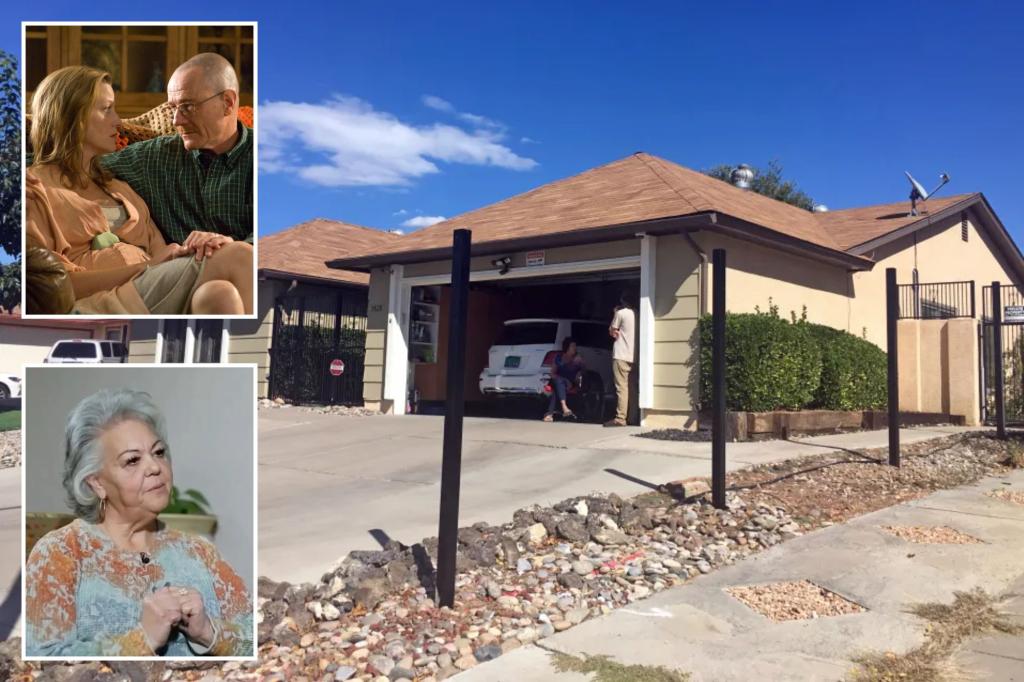The unassuming ranch-style house at 3828 Piermont Drive NE in Albuquerque, New Mexico, became an unlikely pop culture landmark after serving as the fictional home of Walter White, the protagonist of the critically acclaimed television series “Breaking Bad.” What was once a quiet family home transformed into a must-see destination for fans of the show, sparking a complex relationship between the property’s residents and the show’s fervent fanbase. This narrative unfolds as a tale of initial excitement, subsequent frustration, and the ultimate decision to part ways with a home steeped in both personal history and unexpected fame.
For Joanne Quintana, the house represents more than just a backdrop for a popular TV series. It’s the home she grew up in, a place filled with decades of family memories. When “Breaking Bad” began filming in 2006, the experience was initially welcomed as a unique and exciting opportunity. The Quintanas were privy to the behind-the-scenes workings of a major television production, interacting with the cast and crew and witnessing the transformation of their familiar surroundings into the fictional world of Walter White. Quintana even baked cookies for the cast and crew, demonstrating the family’s initial embrace of the show’s presence in their lives. This initial period was marked by a sense of wonder and the novelty of being part of a cultural phenomenon.
However, the initial charm of having a famous house quickly wore off as the show gained popularity. The influx of fans, eager to catch a glimpse of the iconic property, disrupted the Quintanas’ peaceful existence. What started as occasional photo requests escalated into a constant stream of visitors, transforming their quiet street into a bustling tourist attraction. The steady flow of cars, sometimes numbering in the hundreds per day, became a source of constant disruption and frustration. The situation was further exacerbated during local events like the Albuquerque International Balloon Fiesta, which drew even larger crowds to the area, many of whom made their way to the “Breaking Bad” house.
The Quintanas’ experience transitioned from amusement to annoyance and, eventually, to genuine concern for their safety and privacy. Unwanted packages addressed to the fictional “Walter White” raised fears of potential dangers, leading to calls to the bomb squad. The family’s attempts to maintain some semblance of privacy, such as installing a fence, proved futile in deterring the persistent fans. The escalating intrusions led to tense interactions, including a documented incident where Quintana, overwhelmed by the constant scrutiny, lashed out at visitors. The cumulative effect of these incidents underscores the toll that unwanted fame can take on ordinary individuals and their homes.
The “Breaking Bad” house became more than just a filming location; it transformed into a symbol of the show itself, attracting fans eager to connect with the fictional narrative. Some fans went beyond simply observing the house, engaging in acts of homage that further exacerbated the Quintanas’ frustration. The now-infamous incident of fans throwing pizzas onto the roof, mimicking a scene from the show, highlights the blurring of lines between fiction and reality, often with unintended consequences for those living in the real world. The actions of these overzealous fans, while intended as playful tributes, ultimately added to the burden borne by the Quintanas.
The creator of “Breaking Bad,” Vince Gilligan, publicly acknowledged the negative impact of fan behavior on the residents of the house. His condemnation of the pizza-throwing incident and his plea to fans to respect the residents’ privacy reflects an awareness of the unintended consequences of the show’s popularity. Gilligan’s intervention underscores the ethical responsibility creators have towards the real-world individuals and locations that become intertwined with their fictional narratives. This situation also highlights the challenges of managing the impact of cultural phenomena on unexpected communities.
Ultimately, the cumulative burden of living in a pop culture landmark led the Quintanas to make the difficult decision to sell their home. The asking price of $4 million, significantly higher than the median price in the area, reflects not only the property’s unique cultural significance but also the Quintanas’ desire to move on from the relentless intrusions into their lives. While the sale will undoubtedly bring financial gain, it also represents the end of an era for the family, marking the bittersweet parting with a home that holds a lifetime of memories, both ordinary and extraordinary. The story of the “Breaking Bad” house serves as a cautionary tale about the unforeseen consequences of fame and the challenges of navigating the intersection of fictional narratives and real-world lives.

